
[ad_1]
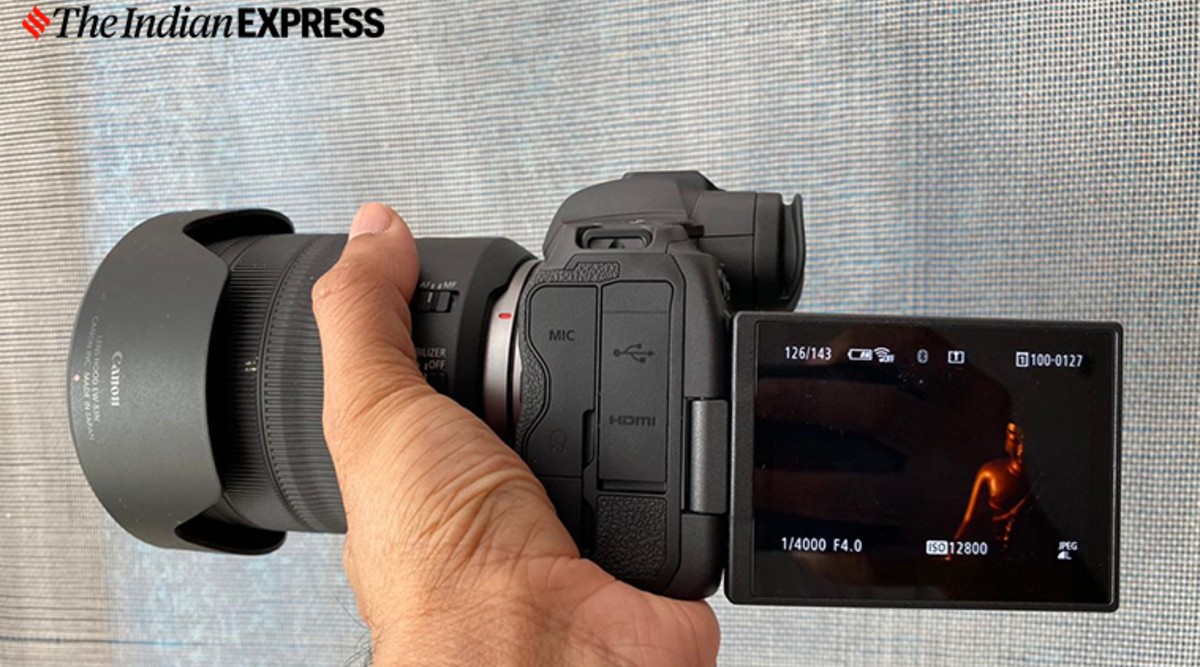 The camera is the size of regular Canon DSLR and not smaller as we have come to expect with mirrorless. It is also heavy, especially with the 24-105mm lens I used for the review. (Express Photo: Nandagopal Rajan)
The camera is the size of regular Canon DSLR and not smaller as we have come to expect with mirrorless. It is also heavy, especially with the 24-105mm lens I used for the review. (Express Photo: Nandagopal Rajan)
The past few months have been a horrible time for lovers of photography. For months you could not step out to travel, or just walk around the nearby park trying to capture some interesting frames. And for those who love portraits, there is the new obstacle in form of the mask before you get to the subject. To make matters worse, even with the unlock process slowly coming into effect, it is not that easy to walk into a place like the Lodhi Gardens in Delhi with a very visible camera hanging from your shoulder because ‘they are prohibited under social distancing norms’.
Anyway, when the Canon EOS R5 came along for review, I had to find a way to check out the new mirrorless camera for professionals. And persist I did.
Canon EOS R5 specs: 45MP CMOS sensor with DIGIC X processor | Dual Pixel CMOS AF | ISO 100-51,200 expanded to L:50, H:102,400 | 30-1/8000 sec shutter with Bulb | 0.5-inch OLED colour EVF + 3.15” Clear View LCD II monitor | Dual Pixel RAW | 20fps with electronic shutter | 8K DCI/ UHD (17:9 / 16:9) 4K DCI/ UHD (17:9 / 16:9), Full HD | Max duration 29min 59sec | Built-in mono microphone | 738 g with card and battery
Canon EOS R5 price in India: Rs 3,39,995
The Canon EOS R5 is a mirrorless camera for professionals. And that means this has a price and a chassis which is not what you would expect in regular cameras. And there is good reasoning behind both.
The camera is the size of regular Canon DSLR and not smaller as we have come to expect with mirrorless. It is also heavy, especially with the 24-105mm lens I used for the review. But it is the kind of heavy that professionals are used to, which actually translates into a reassurance when it comes to professional photography.
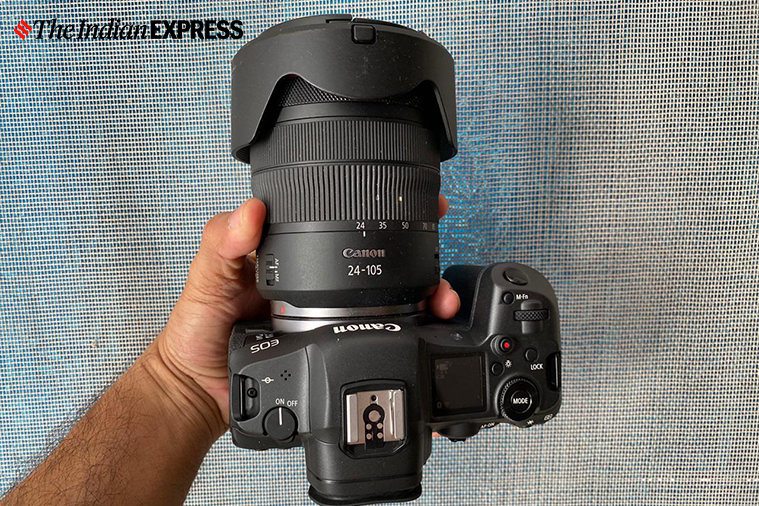 The Canon EOS R5 is a mirrorless camera for professionals. (Express Photo: Nandagopal Rajan)
The Canon EOS R5 is a mirrorless camera for professionals. (Express Photo: Nandagopal Rajan)
The camera offers a good grip and has all the dials and rings you expect to see, where you expect to find them. There is an always-on LCD on top where you can see the settings and a new rating button, which I have not encountered before. The 3.15-inch LCD screen is touch-enabled so you can use this for everything in case the buttons are too old fashioned for you. The ring next to it does not click and my muscle memory of having used older Canon cameras made me keep pushing it to no effect. To move through photos, you just have to turn the ring here. But for those upgrading to the EOS R5 from any other Canon, there is very little learning involved.
With 45 megapixels, the 36×24 mm CMOS sensor is what will really intrigue the professionals though. Being a mirrorless camera, the ISO can go up to 51,200 and be expanded to double that if needed. This means that the camera is going to be a stunner when it comes to low light performance.
In fact, given the complexities of stepping out for a shoot, I decided to set up some low-light experiments at home.
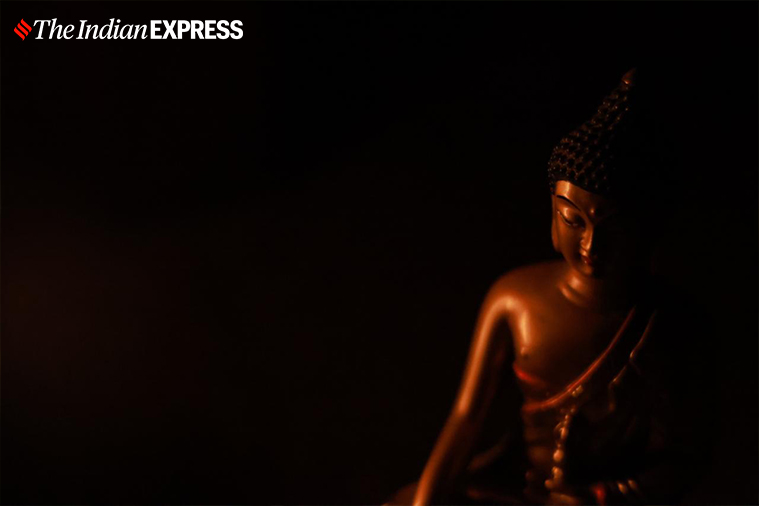 Being a mirrorless camera, the ISO can go up to 51,200 and be expanded to double that if needed. (Express Photo: Nandagopal Rajan)
Being a mirrorless camera, the ISO can go up to 51,200 and be expanded to double that if needed. (Express Photo: Nandagopal Rajan)
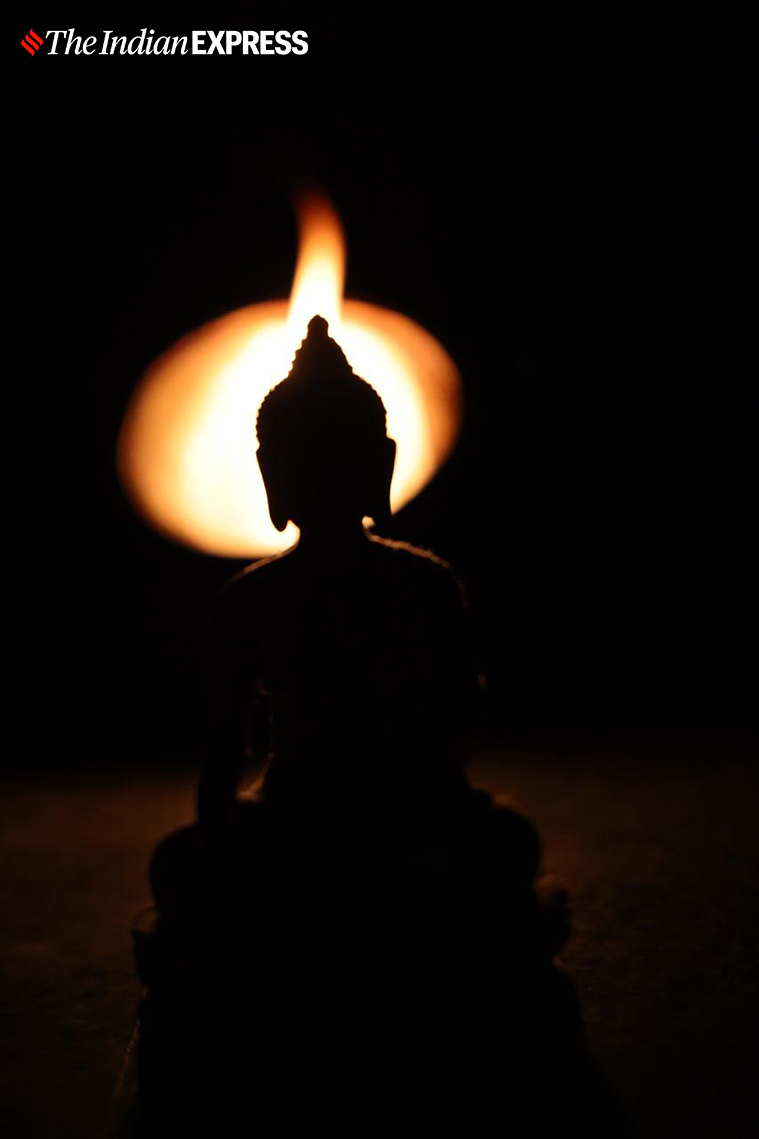 The focus was so precise and you can pinpoint the exact area you want, even when the light was so low. (Express Photo: Nandagopal Rajan)
The focus was so precise and you can pinpoint the exact area you want, even when the light was so low. (Express Photo: Nandagopal Rajan)
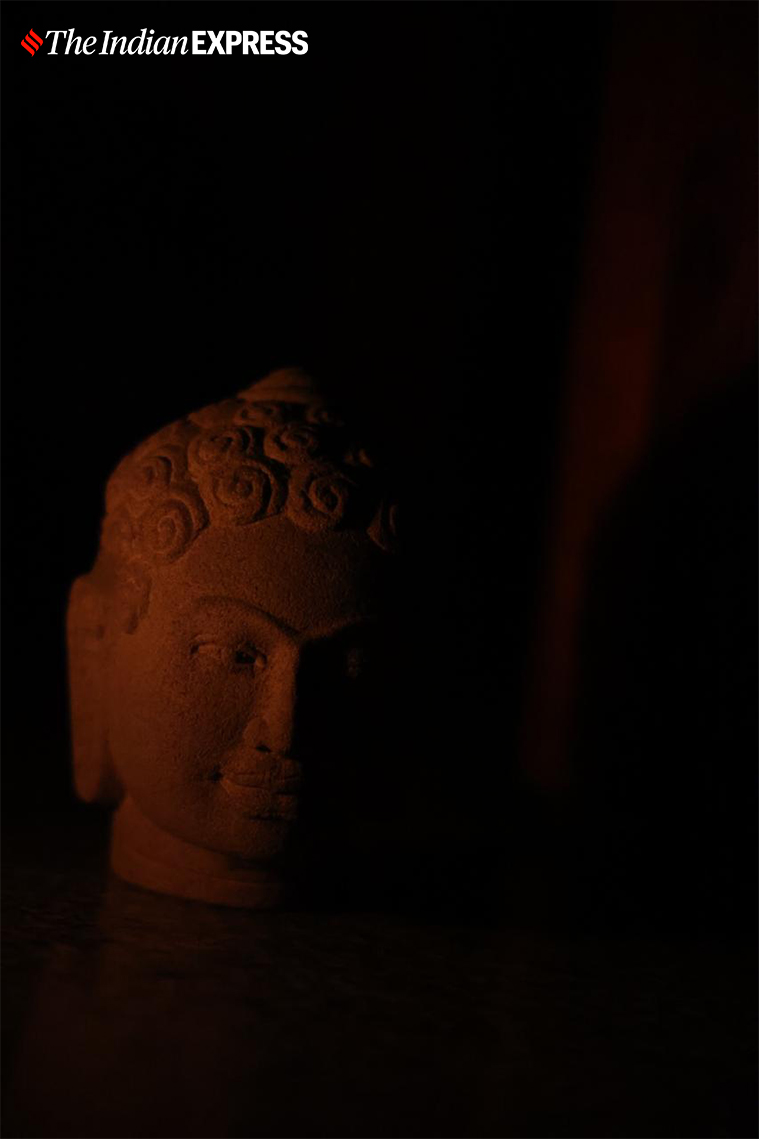 To start with, it has a solution for each frame and nothing is ever too dark — yes, you will need a tripod or really steady hands as you go slower with the shutter speed. (Express Photo: Nandagopal Rajan)
To start with, it has a solution for each frame and nothing is ever too dark — yes, you will need a tripod or really steady hands as you go slower with the shutter speed. (Express Photo: Nandagopal Rajan)
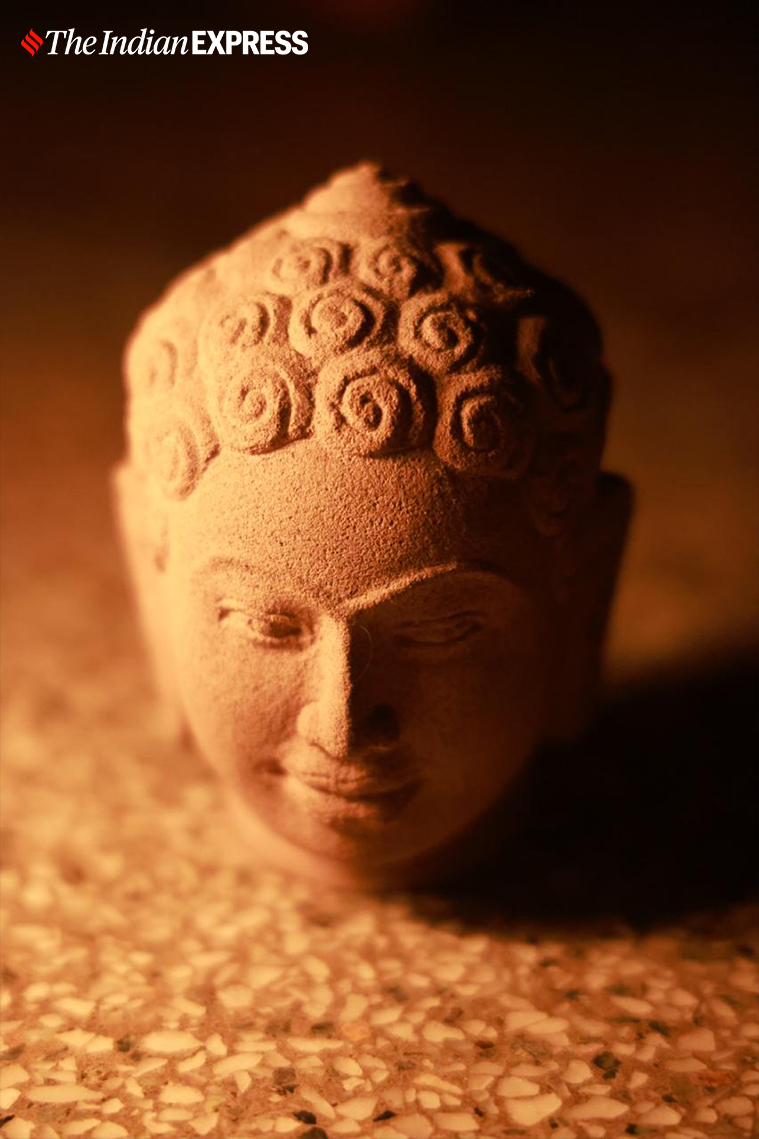 I could feel that the focus was so precise and you can pinpoint the exact area you want, even when the light was so low. (Express Photo: Nandagopal Rajan)
I could feel that the focus was so precise and you can pinpoint the exact area you want, even when the light was so low. (Express Photo: Nandagopal Rajan)
A few inanimate subjects were set up in a dark room with just a candle as the light source. This is when I could grasp the effectiveness of a camera like this. To start with, it has a solution for each frame and nothing is ever too dark — yes, you will need a tripod or really steady hands as you go slower with the shutter speed. Also, I could feel that the focus was so precise and you can pinpoint the exact area you want, even when the light was so low.
The EOS R5 is also a great camera for action shots, given it can offer 20 frames per second. I tried my best to get some eagles soaring over my terrace, but the extraordinarily hot September seems to have kept them way too. Anyway, I got my nine-year-old to goof around and got a series of shots so good, they could be turned into a stop motion video, as my son suggested.
 R5 can record in 8K and 4K with up to 120FPS and this could be the reason why a lot of professionals think of upgrading to the EOS R5. (Express Photo: Nandagopal Rajan)
R5 can record in 8K and 4K with up to 120FPS and this could be the reason why a lot of professionals think of upgrading to the EOS R5. (Express Photo: Nandagopal Rajan)
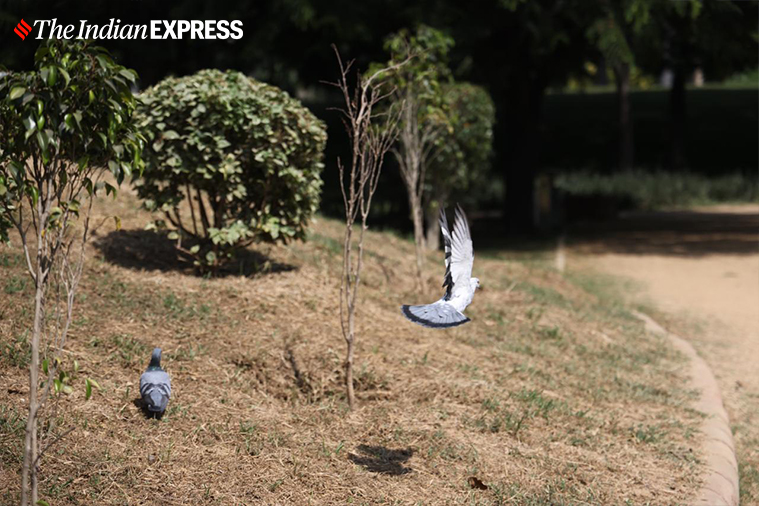 The kind of details the camera captures in the 4K HQ mode is stunning and clearly a step up from the regular 4K mode. (Express Photo: Nandagopal Rajan)
The kind of details the camera captures in the 4K HQ mode is stunning and clearly a step up from the regular 4K mode. (Express Photo: Nandagopal Rajan)
There is more to this camera though. In fact, the R5 can record in 8K and 4K with up to 120FPS and this could be the reason why a lot of professionals think of upgrading to the EOS R5. As an amateur, I was stuck for a while trying to figure out how to get to the video settings and when I did get there, I was pleasantly surprised by the topics available. This is a camera that can shoot a proper movie that plays on the big screen if the need arises. I just loved the auto-focus at work when shooting video and everything is just perfect. The kind of details the camera captures in the 4K HQ mode is stunning and clearly a step up from the regular 4K mode.
But then you realise that the camera does heat up when you record video for too long and shuts down when it can’t take the heat anymore. The issue there is that you will need to wait some time before it can start shooting again. So those planning to shoot for long durations might need to shoot in regular 4K and not in the 4K HQ option or 8K. Better to shoot in short bursts if you want to use the higher resolutions. The subject tracking is just superb and something videographers will love.
 This is a camera that can shoot a proper movie that plays on the big screen if the need arises. (Express Photo: Nandagopal Rajan)
This is a camera that can shoot a proper movie that plays on the big screen if the need arises. (Express Photo: Nandagopal Rajan)
 I just loved the auto-focus at work when shooting video and everything is just perfect. (Express Photo: Nandagopal Rajan)
I just loved the auto-focus at work when shooting video and everything is just perfect. (Express Photo: Nandagopal Rajan)
 The camera does heat up when you record video for too long and shuts down when it can’t take the heat anymore. (Express Photo: Nandagopal Rajan)
The camera does heat up when you record video for too long and shuts down when it can’t take the heat anymore. (Express Photo: Nandagopal Rajan)
 Better to shoot in short bursts if you want to use the higher resolutions. (Express Photo: Nandagopal Rajan)
Better to shoot in short bursts if you want to use the higher resolutions. (Express Photo: Nandagopal Rajan)
 The subject tracking is just superb and something videographers will love. (Express Photo: Nandagopal Rajan)
The subject tracking is just superb and something videographers will love. (Express Photo: Nandagopal Rajan)
The EOS R5 offers CF and SD card options for recording and you will need the former for all high-resolution videos. I did ask for a CF card and reader — I got stuck the last time a camera came only with CF card options — as this is not something I had in stock. But I could have done without the card reader as the Canon app is able to easily transfer videos from the camera to a smartphone or laptop as you shoot. However, this option does not work for 8K videos.
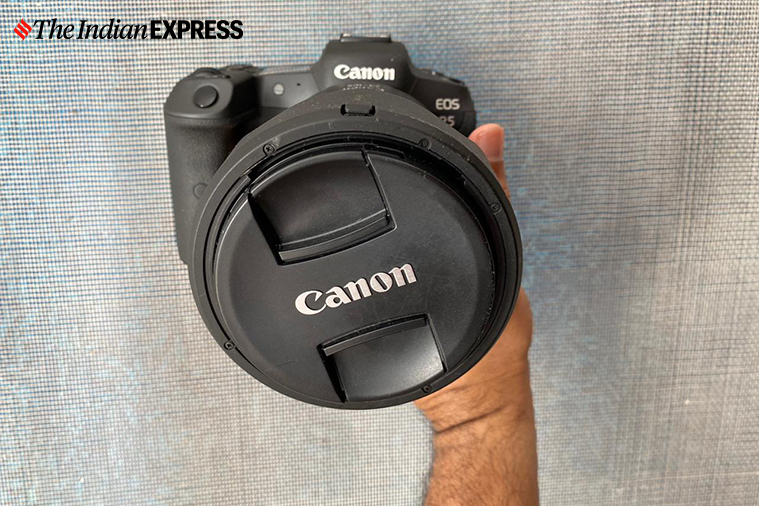 The EOS R5 offers CF and SD card options for recording and you will need the former for all high-resolution videos. (Express Photo: Nandagopal Rajan)
The EOS R5 offers CF and SD card options for recording and you will need the former for all high-resolution videos. (Express Photo: Nandagopal Rajan)
To wrap up, the Canon EOS R5 is a camera that pushes the limits of what digital cameras do, be it low light photography, fast auto-focus on video resolution. This is by all counts a camera for the professionals and not something amateurs should attempt to own. The camera will open up new opportunities and workflows for professionals, but also present some new challenges on how to take the high resolution formats like 8K. EOS R5 is Canon’s way of taking on the challenge posed by Sony’s Alpha series, and this competition can only be good for the users.
📣 The Indian Express is now on Telegram. Click here to join our channel (@indianexpress) and stay updated with the latest headlines
For all the latest Technology News, download Indian Express App.
© IE Online Media Services Pvt Ltd
[ad_2]
Source link